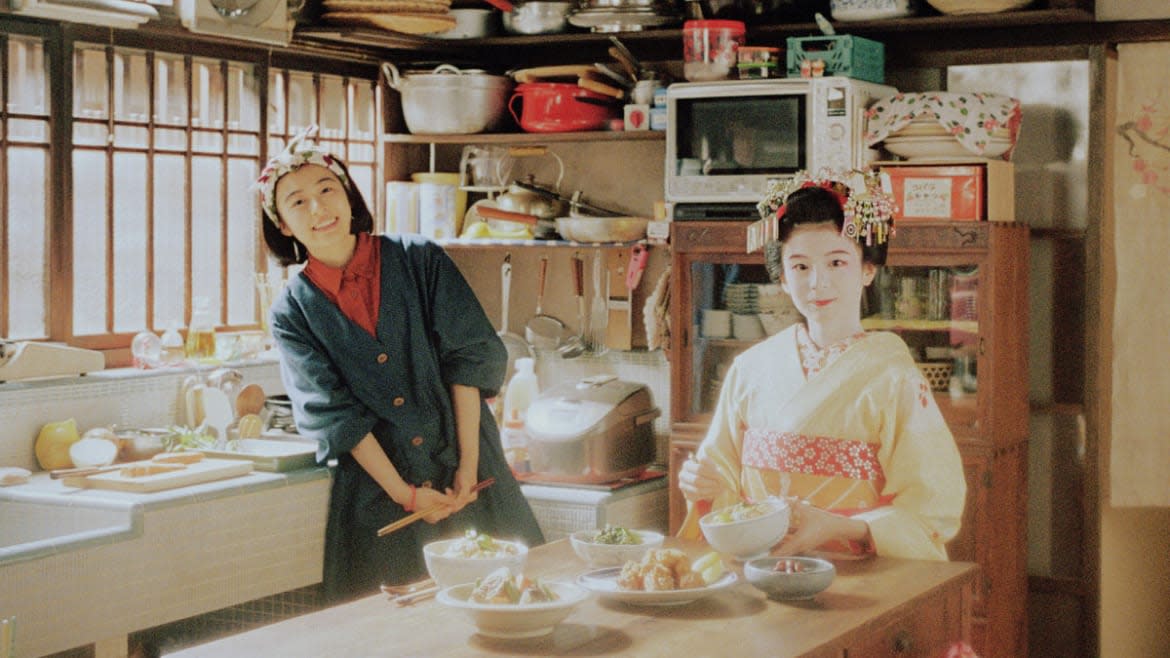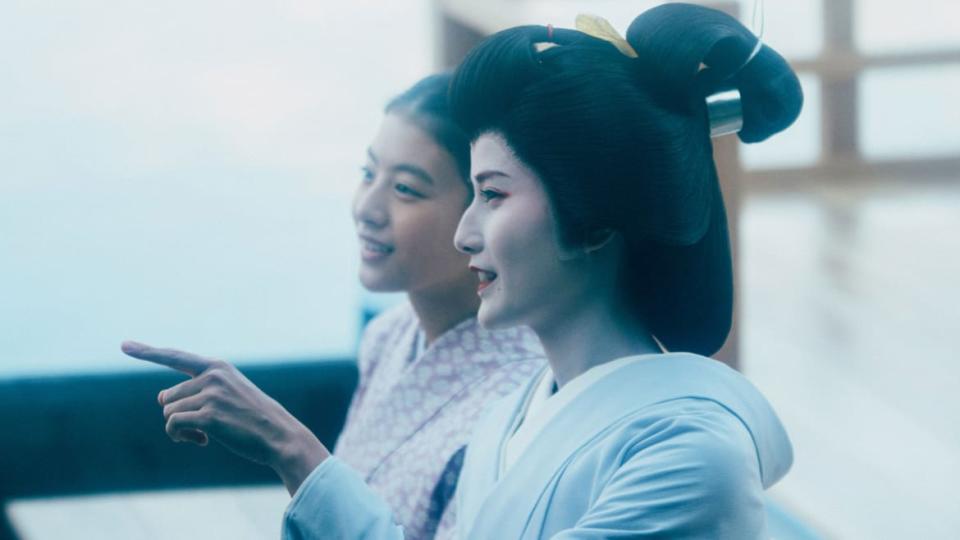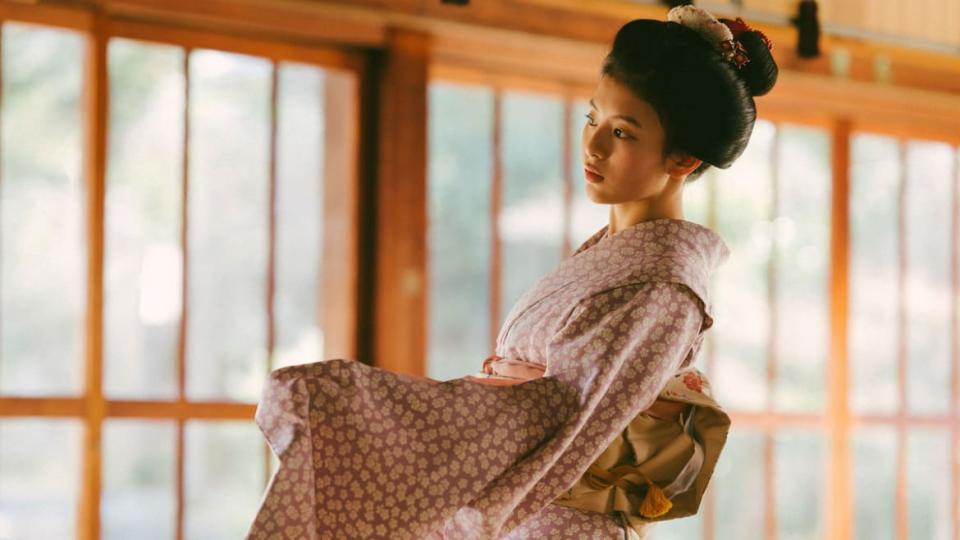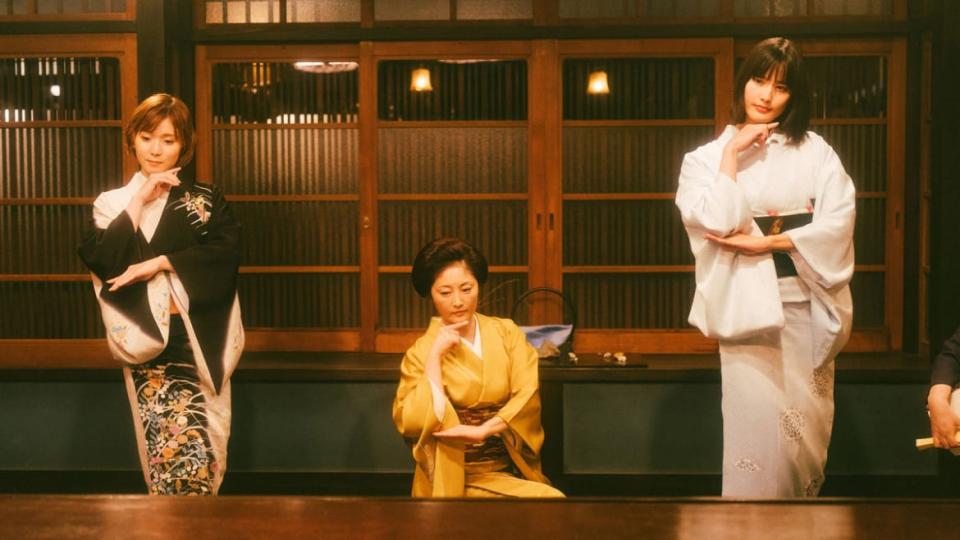Japan’s Finest Filmmaker Makes His Netflix Series Debut: Should You Watch?

- Oops!Something went wrong.Please try again later.
Hirokazu Kore-eda (After Life, Shoplifters) is one of international cinema’s most celebrated titans, and on the heels of the December stateside release of his latest feature Broker, he makes his Netflix debut on Jan. 12 with The Makanai: Cooking for the Maiko House, a nine-part series that will strike many Americans as significantly less accessible than his film output.
The story of young best friends endeavoring to become geishas in modern-day Japan, it offers an inviting glimpse into a unique foreign world—at least, that is, until it bogs down in inert, one-dimensional drama of the most insufferable sort.
Created and co-directed by Kore-eda, and based on Aiko Koyama’s manga Maiko-San Chi No Makanai-San, The Makanai: Cooking for the Maiko House has clearly been designed for Japanese audiences, insofar as it assumes that viewers are familiar with the cultural customs governing its tale. While authentic and often beautifully rendered, its details and topics of conversation could be a roadblock for domestic binge-watchers. The history and rituals associated with geishas are revered cultural traditions, and the series dives into the minutiae of a practice that might be unfamiliar to some global viewers.
There may not be an introductory explanation of the ins and outs of geishas, yet the longer The Makanai: Cooking for the Maiko House progresses, the more things come into view. The primary focus is Kiyo (Mori Nana) and Sumire (Deguchi Natsuki), teenage BFFs who relocate from their hometown of Aomori to Kyoto, where they move into a house known as a yakata and begin working as maikos, which are apprentices in training to become geikos (i.e. full-fledged geishas).

This route is supported by Kiyo’s kindly grandmother and her baseball-playing buddy Kenta, and frowned upon by Sumire’s father, who doesn’t understand why his daughter has opted for this time-honored path instead of completing high school. Most others won’t either, given that Kore-eda and company don’t provide insight into why this ancient practice has such a pull over certain young women—especially since it forbids them from having boyfriends or owning cell phones—nor what larger place they currently hold in society.
As befitting a series made for non-Westerners, The Makanai: Cooking for the Maiko House doesn’t justify the continuing value or purpose of geishas, presupposing that viewers will naturally accept them as esteemed and indispensable. Its protagonists are simply presented as enthusiastic and/or troubled girls who’ve chosen to room together while studying to be prized entertainers.
Their clients, as far as one can tell, are groups of wealthy men, although nitty-gritty specifics about their profession —about commonplace attitudes regarding the role of geishas in today’s Japan—are relatively scant, and largely gleaned from the action at hand. Steering clear of contextualizing its subject, Kore-eda’s show is a fascinating peek at a hallowed tradition, albeit one that comes across as more than a bit thin, thanks to characters who are superficial to their core and drama that’s so wispy as to be nearly non-existent.

Shortly after arriving at the Saku yakuta, Kiyo learns that she’s not cut out for this vocation. That threatens to take her away from Sumire, but she fortuitously finds her niche when the house’s makanai (i.e. resident chef) retires and she swiftly and successfully steps into the position. Kiyo’s lack of ambition is supposedly offset by her aptitude in the kitchen, as regular shots of her preparing food—as well as shopping at local markets, where she comes to know the vendors—strive to illustrate.
Unfortunately, Kiyo is an incessantly grating cutie-pie who spends the entirety of The Makanai: Cooking for the Maiko House either going “oooooooh!” or beaming with squinty-eyed delight while clapping and giggling…and giggling…and giggling some more. Along with every other pre-adult character, she’s a ditzy, perpetually tee-heeing cartoon caricature.
A Japanese Cinematic Masterpiece About Life on the Margins
As Kiyo gets comfortable in her servile new gig, Sumire hones her talent, albeit only rarely on camera, as The Makanai: Cooking for the Maiko House spends only a scant few minutes of its nine episodes depicting the “art” of geishas. Mostly, it concentrates on a variety of wispy points of interest: house mother Azusa (Tokiwa Takako) grapples with her sullen daughter Ryoko (Makita Aju) and would-be suitor Tanabe; premier geiko Momoko (Hashimoto Ai) mulls giving up her profession for love; and former maiko Yoshino (Matsuoka Mayu) returns to the fold, where she pretends that she’s in a rivalry with out-of-her-league Momoko and generally acts like a brash loudmouth.
To call these storylines, however, would be to greatly oversell them. Kore-eda erases all uncertainty and conflict from the proceedings, thereby rendering his narrative strands merely rickety scaffolding intended to prevent the show from collapsing in on itself.

Little happens in The Makanai: Cooking for the Maiko House; the series is content to coast along on an oh-so-gentle wavelength epitomized by a musical score of light, jaunty, cutesy piano and woodwinds. Punctuated by an endless stream of jovial tittering, that soundscape epitomizes the material’s twee shallowness.
Many other figures float in and out of Kiyo and Sumire’s orbits as they glide along their respective, intertwined paths, and not a single one makes an impact. Then again, none of its main players are worth paying attention to either. The only real fascination comes from trying to decipher the tenets of the myriad customs on display, and from contemplating the ostensible vacuousness of these women’s lives, which are primarily spent consuming and gushing over Kiyo’s food, and—in the case of Sumire—dreaming big dreams about one day eating tiny sandwiches.
The Makanai: Cooking for the Maiko House’s greatest strength is its authentic and eye-opening portrayal of geishas’ day-to-day conventions. It stumbles, however, by failing to investigate its milieu (and its apparent misogynistic underpinnings) at any turn, and by devising characters and dilemmas that are flimsy beyond all reason. Resembling an early-2000s The CW series minus the actual melodrama, it’s a skin-deep paean to an archaic tradition that, on the basis of its action, has little relevance today.
Get the Daily Beast's biggest scoops and scandals delivered right to your inbox. Sign up now.
Stay informed and gain unlimited access to the Daily Beast's unmatched reporting. Subscribe now.

